Most new EVs boast ranges of 250 miles or more thanks to improved battery technology and the ability to stuff an awful lot of them in large, profitable cars and trucks. Unfortunately, most of those are pricey, starting at $40,000 or much more, and are more resource-intensive due to those big battery packs. The alternative is the handful of more economical options with just enough range for most situations, including the Mini Cooper SE, Hyundai Ioniq and 40-kWh Nissan Leaf, and now, the 2022 Mazda MX-30. It's the most pleasant car in this entry-level EV game thanks to its superior driving experience, interior quality, features and design, but the fact remains that its price is high for a small SUV and its limited 100-mile range will restrict it to a narrow niche of potential buyers.
The MX-30 is based on the same platform as the Mazda3 and CX-30. Its length and wheelbase are even nearly identical to the latter's. The suspension – MacPherson struts up front and a torsion beam in the back - is also the same design. Of course, the styling is radically different with a coupe-like roofline, rear-hinged half-doors for the back, and a square-jawed nose with a small grille. The distinctive contrasting roof and silver badging on the rear pillars are exclusive to the Premium Plus package.
Powering it is a single electric motor making 143 horsepower and 200 pound-feet of torque, which all goes to the front wheels via a single-speed transmission. Supplying power is a 35.5-kilowatt-hour gross battery pack that supplies those 100 miles of EPA-rated range.
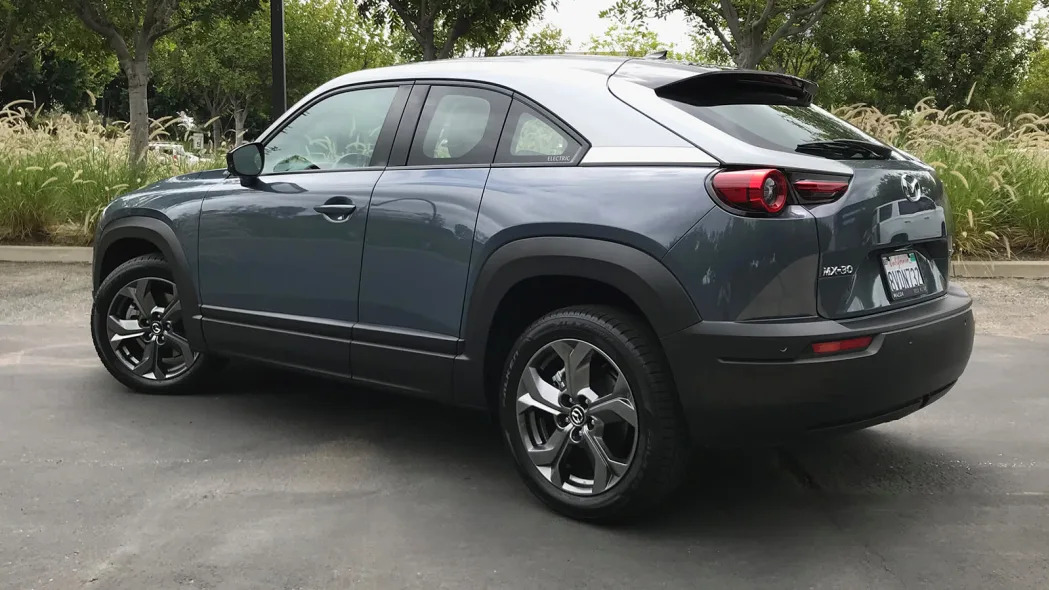
And there's no getting around it, that range isn't good. It's one of the lowest of any EV on the market. Part of that is the relatively small battery size. And no, without some major improvement in power density, Mazda can't add additional capacity. Apparently it has filled the platform as full as possible, and any more batteries would have to be placed in risky locations or further compromise interior space. Another issue is that the MX-30 is not as efficient as other EVs. It gets a combined fuel economy equivalence of 92 mpg-e. The Mini Cooper SE, which has a slightly smaller battery, but gets 114 miles of range and has a fuel economy equivalence of 110 mpg-e. The competitively priced 149-mile Nissan Leaf and 170-mile Hyundai Ioniq also get their greater range from additional battery capacity and even better efficiency.
Mazda offers explanations for going with a small battery, and they have some merit. More batteries means more weight and more material cost, which are bad for driving dynamics and can be somewhat counter-intuitive to being more environmentally friendly. It's just not optimal for the market. At least Mazda seems to be aware of that, since it offers a couple things to help out with the range. It includes a $500 credit from ChargePoint that can be used to buy any Level 2 home charge point, or be put toward paying for public charging. Furthermore, Mazda includes three years of what's called the Mazda MX-30 Elite Access Loaner Program. This lets MX-30 owners borrow any other Mazda model for up to 10 days each year for long trips or trips that require more space. It's not restricted to a group of models, either, so you could hypothetically borrow a Miata just for the fun of it.
There's also the upcoming plug-in series-hybrid MX-30 slated for next year. It will use a tiny rotary engine to generate electricity when the battery pack is drained. This will allow it to travel farther without recharging, and give owners more flexibility about when and where they go in the car, since they won't be at the mercy of charging stations. This is just one way the MX-30 is reminiscent of the BMW i3, a low-range EV that offered a range-extender model equipped with a tiny engine. It too had rear-hinged half doors.
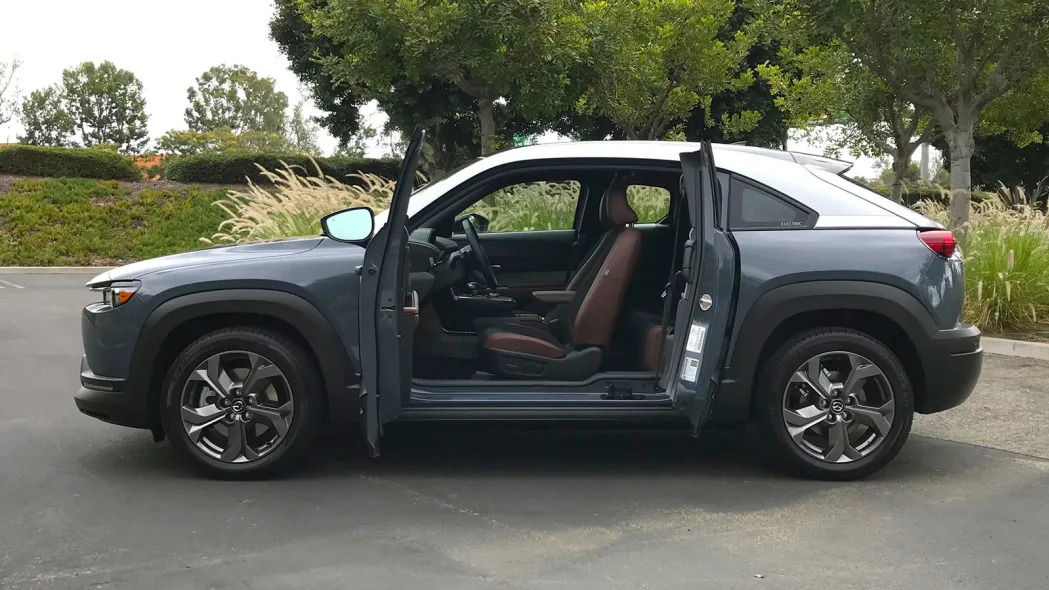
Moving past the range issues, there are quite a few things to like about the MX-30, a lot of which comes from the way the MX-30 drives. Since the MX-30 shares its underpinnings with the 3 and CX-30, it's no surprise that it drives like them, and that's great. Well, maybe it's a little surprising, since the weight distribution is basically the opposite of the gas cars with 40% at the front and 60% at the rear. It also weighs 3,655 pounds, or 421 more than a front-wheel-drive CX-30.
Like those other Mazdas, the chassis is stiff, body roll is mild and although the ride is a touch firm, its fantastic damping keeps the car composed and smooth over rough pavement. The steering is some of the best in the business with solid feedback, exceptional precision, and weighting that's light, but not too light. It's even aided by a faster-reacting electric version of Mazda's G-Vectoring Control, which now works while braking and accelerating because of the electric motor's regenerative braking capabilities. It even adds a tiny amount of acceleration to the inside wheel on corner exit (about 0.01g) in addition to slight braking of the outside wheel to help the car straighten out. The change isn't noticeable without testing back-to-back with a gas-powered Mazda, but it is interesting.
Hit the throttle, and power feels similar to the MX-30's gas-powered platformmates, and the numbers are in striking distance of the Hyundai Ioniq and the 40-kWh Nissan Leaf. What's intriguing about the MX-30 is the throttle tuning. Mazda highlights that the throttle was developed to provide a feeling more like that of an internal combustion car. Basically, the amount of power provided is stretched out a bit, rather than giving you all that torque instantly. And they're bang-on in creating that sensation. It also has the benefit of feeling like the power curve doesn't fall off as fast as in other EVs. Similarly, Mazda designed the regenerative braking to come on more smoothly, and, while it can be adjusted to be fairly strong, you can't quite do one-pedal driving. The MX-30 also uses brake-by-wire, which helps prevent strange brake feel as it blends regenerative and physical braking. It's firm, consistent and easy to modulate, but it feels artificial and doesn't provide as clear feedback.
To help provide additional feedback to what the car is doing and for making the feeling of accelerating and decelerating more natural, Mazda pipes a light hum into the cabin. It sounds like a blend of electric whir noises and some of the grumble of an internal combustion engine, and it is effective in communicating changing speed. But it's strange that the sound sticks around when cruising at highway speed. It's not terribly loud or unpleasant, but it prevents the cabin from being quite as calm and silent as you'd expect from an EV, and could bother some. It also can't be switched off, nor can the volume be adjusted.

The interior is another highlight. There are two color options, one with a mottled gray cloth and light gray leatherette, and one with black cloth and brown leatherette. Either way, you get stylish upholstery that feels fairly premium. It's backed up by other cool material choices, such as the recycled bottle trim panels on the doors and the cork trim in the center console. The latter is a throwback to Mazda's origins as a producer of cork products, plus cork is a sustainable product, which is fitting for an EV. The dashboard is modern, sleek and minimalist as is typical for modern Mazdas, and everything is put together well. The floating center console is a nifty touch and adds some handy storage, and the electronic shifter has a nice chunky action.
As for infotainment system, it's the same as you'll find in other Mazdas: an 8.8-inch screen controlled via a knob in the center console, with no option for touching the screen. Mazda does that to keep your eyes high and closer to the road, which makes it curious that the single-zone climate control system, as well as the standard heated seats, are controlled via a 7-inch touchscreen. It seems like a bit of a gimmick since it only is used for climate controls. It even has physical buttons on either side as redundancies. But it's uncomplicated, so it's more of an oddity than a problem.
Sitting in the MX-30 is good for front passengers. There's plenty of head, leg and even knee room, so drivers of all sizes should be able to get comfortable easily. It even has eight-way power adjustment for the driver with memory settings as standard. The cushions are thick and fairly supportive, save for the slightly short seat base. The position is on the higher side like the CX-30 rather than the 3, though rearward visibility is closer to the latter. This is due to the thick rear pillar and door pillars. Fortunately, blind-spot monitoring is standard.
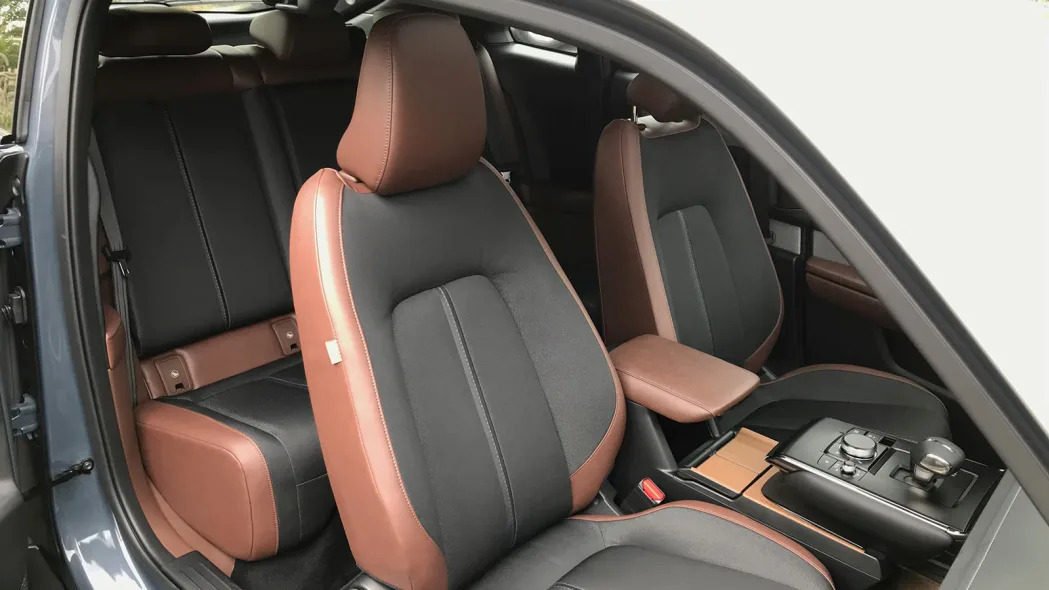

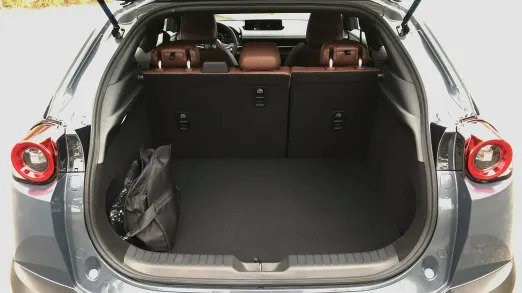
Rear passengers will be less happy. The back seats are extremely tight on legroom, and like every vehicle with rear-hinged half doors, you have to open the front doors first to access the rears. This can be annoying, especially in tight parking spots where you can end up being fenced in between the two doors and the car next door. At least cargo space is solid at 21 cubic feet with the seats up. That's slightly more than the CX-30, slightly less than a Leaf or Ioniq, and vastly larger than the Mini Cooper SE's miniscule 8.7 cubic feet.
There is one other potential hiccup for the MX-30, and that's price. It starts at $34,645, which is more than any of the other short-range EVs we've discussed. It's actually even more expensive than the Chevy Bolt EV that has a range of over 200 miles (admittedly, that is not eligible for the $7,500 federal tax rebate as the MX-30 and most other EVs are). It's not quite a level playing field, though, as the Mazda provides a nicer interior, a more refined driving experience and comes with more standard features. A Mini with the same equipment would cost a bit more and is obviously a lot smaller and less functional.
Basically, the Mazda MX-30 is a very good car for the few that it will work for. If you can get by with the short range, it's one of the most stylish and well-appointed EVs for the money. But if you need a bit more range, whether it's to counter cold weather or to give yourself some buffer, it's a non-factor. As such, we suspect that the upcoming series hybrid will actually be the MX-30 to have.
Related Video:
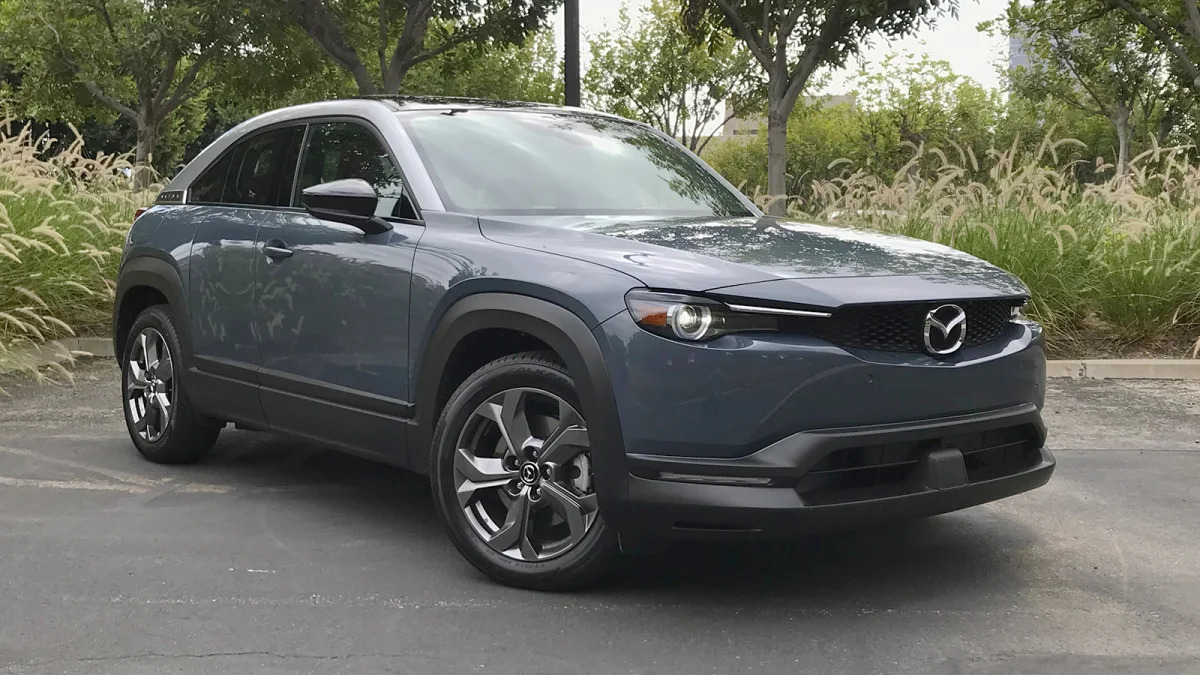









Sign in to post
Please sign in to leave a comment.
Continue